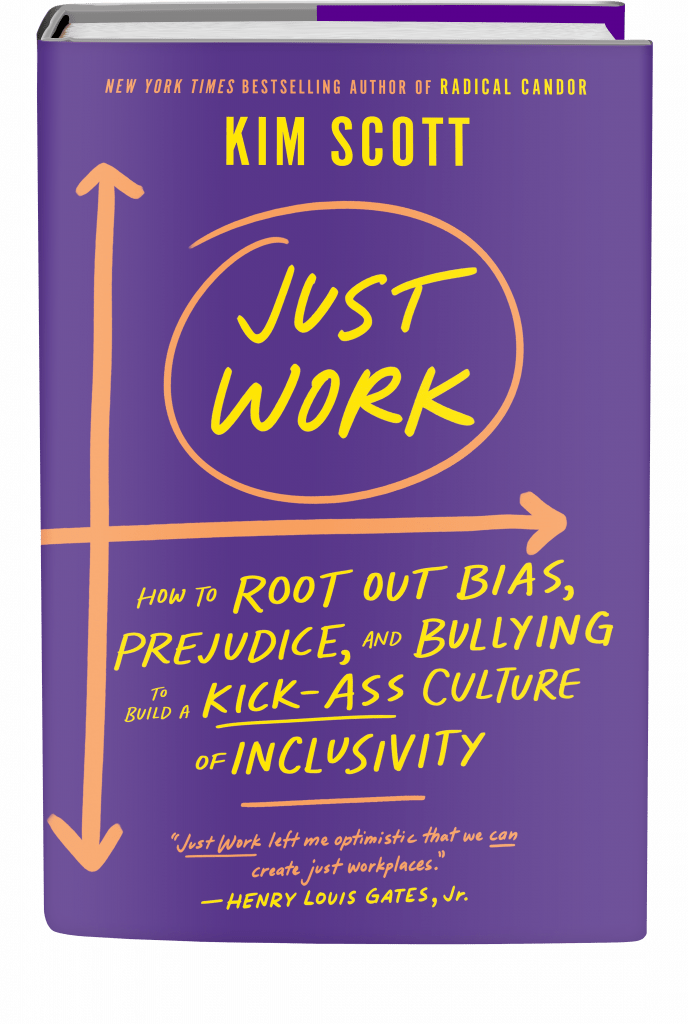

Streamline Your Hiring Process In 5 Simple Steps | Radical Candor
source link: https://www.radicalcandor.com/hiring-process-radical-candor/
Go to the source link to view the article. You can view the picture content, updated content and better typesetting reading experience. If the link is broken, please click the button below to view the snapshot at that time.

How to Apply Radical Candor to Your Hiring Process to Build and Retain a Great Team
Your hiring process is important; it’s a vital part of building a great team. When hiring, you’re obviously looking for people who will be great at the job. But should you be hiring people in rock-star mode or people in superstar mode?
Remember, people in rock-star mode are solid as a rock. Think the Rock of Gibraltar, not Bruce Springsteen. They love their work. They have found their groove. They don’t want the next job if it will take them away from their craft.
People in superstar mode, on the other hand, need to be challenged and given new opportunities to grow constantly.
The answer is, of course, “It depends.” There are some jobs that require one or the other.
Also, you want to make sure you have the right ratio overall on your team. If you have too many folks in superstar mode, hire someone in rock-star mode next.
When you are growing really fast, you’ll wind up spending a lot of your time hiring.
At one point when I was at Google, I spent 25% of my time hiring people. What follows are descriptions of the key things I’ve seen work (and not work) at Google, Apple, and elsewhere.
These are the basic elements of a hiring process that is as rigorous as possible without being overly onerous. All hiring is flawed and subjective, and these drawbacks cannot be fixed; they can only be managed.
Here are some simple things you can do to make sure you’re hiring the right people.
Need help with Radical Candor? Let's talk!
Job description: define team “fit” as rigorously
as you define “skills” to minimize bias
And look for culture adds not culture fits

The hiring person—not a recruiter!—should write the job description, basing it on the role, the skills required for the role, and the team “fit” criteria. Defining team fit can be hard, which makes it tempting to leave out.
Try to describe your culture in three to four words. It could be “detail-oriented,” “quirky,” and “blunt.”
Or maybe it’s “big picture,” “straightlaced,” and “polite.” Whatever you choose, be disciplined about interviewing for those things. This will help people avoid making gut decisions that are so often driven by bias.
Also, if you take the time to define the growth trajectory required for the role, it can help the interviewers avoid one kind of hiring bias: hiring people who share your ambitions, which may not be desirable for the role.
The written job description should then go to all interviewers, so they know precisely what they are interviewing for.
Written skills assessments can also minimize bias. Interviewing takes time, filling out interview feedback reports takes time, and so it’s important to be very selective about who gets invited to interview.
A number of false positives and false negatives can be weeded out with a good prescreen. An example of a good prescreen is a skills assessment: ask potential candidates to do a project or solve a problem related to the job they’re applying for.
This will weed out a number of candidates who look good on paper but can’t actually do the work. It will also give candidates who’d be great at the job but don’t appear to be a fit on paper the opportunity to interview.
To allow for meaningful comparisons,
use the same interview committee for multiple candidates
If you can avoid it, don’t make unilateral hiring decisions.
Because interviewing is so subjective and prone to bias, you’ll improve your odds of making good decisions by getting multiple perspectives.
However, this means you need to be consistent and thoughtful about who interviews with whom. If Bob, Charlene, and Dory interviewed and liked Xavier, but Ebert, Frank, and Georgia interviewed and liked Zan, how to decide whom to hire?
This is a waste of eight people’s time. Four people is about the right size for an interview committee.
Ideally, the interviewing committee is diverse. If you’re a female candidate, it can be off-putting if everyone who interviews you is male. If you’re an underrepresented person, it can be frustrating if everyone who interviews you is homogeneous.
It’s also helpful if at least one of the interviewers is on another team. This prevents “desperation hiring.”
When there’s a “hole” on a team, people become so eager to fill the position that they ignore warning signals. Somebody who isn’t feeling the pain of the hole on the team as acutely is more likely to point out these danger signs.
Casual interviews reveal more about team fit than formal ones

I am sure that there is good interview training out there somewhere, but I’ve never encountered it.
My experience is that interviewing is a learning-by-doing skill. Let people develop their own style. I love stories, so my whole interview technique is just to ask people to “give me the oral version of your résumé.”
Another good practice is to have people intentionally create more casual moments—take candidates to lunch, walk them to the car. Ask the receptionist and schedulers if they had any reaction to the candidate.
In unguarded moments, candidates will do or say revealing things. An important part of my team’s culture was Bob Sutton’s “No Assholes” rule.
One candidate I was about to hire was so rude to the scheduler that she cried. Another candidate was rude to a server. I didn’t hire either of them. Another picked up napkins he hadn’t dropped that were littering the floor. I did hire him.
An executive I know who’s a great hirer always walks candidates to the car. Here are a few of the things she’s learned on these walks: one candidate divulged a drug habit, another bragged about his dominance at home with his family and said he had to keep his “ women in line,” another joked about how he liked to gossip about other colleagues and clients at lunch.
Make interviews productive by jotting down your thoughts right away
Write down your interview feedback; doing that is as clarifying for you as it is for the rest of the committee, and it will result in better hiring decisions.
Write down your thoughts on each of the skills, if you’re interviewing for skills, as well as for each of the team fit criteria identified.
I recently interviewed a candidate who was both charming and had an impressive résumé, but something was bothering me. I put my finger on it only when I sat down to write interview feedback: he had a tendency to make big assertions without having precise details at his fingertips.
He talked about Company X’s system as “able to scale to infinity,” but when I pressed him he said they could handle a few million rows of data a day— hardly infinity, or even that impressive.
He was also a little vague on what exactly Company X was doing to drive revenue, and what his role in driving it was.
I know, you’re busy and you don’t have time to write everything down.
Here’s a tip: schedule an hour, interview for 45 minutes, and write for 15. This arrangement will force you to have a more focused interview and to make a better recommendation about whom to hire.
Debrief/decision: if you’re not dying to hire the person, don’t make an offer

The best advice I ever got for hiring somebody is this: if you’re not dying to hire somebody, don’t make an offer.
And, even if you are dying to hire somebody, allow yourself to be overruled by the other interviewers who feel strongly the person should not be hired. In general, a bias toward no is useful when hiring.
Once three to four candidates have been interviewed for a role, the hiring committee should meet to discuss each one.
These synchronous conversations take real discipline to schedule, but if you believe that it makes sense to have multiple people interview each candidate, then talking about your assessments face-to-face is the fastest and soundest way to make a good decision.
Making all feedback visible to all interviewers after they’ve submitted theirs will help these hiring-committee meetings go more quickly, but it will require more prep from each person.
A good way to ensure that everyone is on the same page is to schedule a one-hour meeting with a 15-minute “study hall” time at the beginning so everyone can read everyone else’s feedback.
If run well, the meeting should generally end early. If your team is empowered to make a decision without further ado, and if you are dying to hire the person and nobody has overruled you, do it immediately!
If not, make your recommendation to the powers that be at your company, and push them to make a decision fast.
*This post was adapted from Radical Candor: Be a Kickass Boss Without Losing Your Humanity
————————————————————————————————————————————————————————————–
Download our free learning guides to start putting Radical Candor into practice.
Sign up for our Radical Candor email newsletter >>
Shop the Radial Candor store >>
Book a keynote or workshop >>
Need more help getting your team to practice giving helpful feedback to each other? Then you need The Feedback Loop (think Groundhog Day meets The Office), a 5-episode workplace comedy series starring David Alan Grier that brings to life Radical Candor’s simple framework for navigating candid conversations.
You’ll get an hour of hilarious content about a team whose feedback fails are costing them business; improv-inspired exercises to teach everyone the skills they need to work better together; and after-episode action plans you can put into practice immediately to up your helpful feedback EQ.
We’re offering Radical Candor readers 10% off the self-paced e-course. Follow this link and enter the promo code FEEDBACK at checkout.
Just Work is Available Everywhere Books Are Sold!

Order Kim’s new book, Just Work: How To Root Out Bias, Prejudice, and Bullying to Create a Kick-Ass Culture of Inclusivity, to learn how we can recognize, attack, and eliminate workplace injustice ― and transform our careers and organizations in the process.
We ― all of us ― consistently exclude, underestimate, and underutilize huge numbers of people in the workforce even as we include, overestimate, and promote others, often beyond their level of competence. Not only is this immoral and unjust, but it’s also bad for business. Just Work is the solution.
Just Work is Kim’s new book, revealing a practical framework for both respecting everyone’s individuality and collaborating effectively. This is the essential guide leaders and their employees need to create more just workplaces and establish new norms of collaboration and respect.
Recommend
About Joyk
Aggregate valuable and interesting links.
Joyk means Joy of geeK